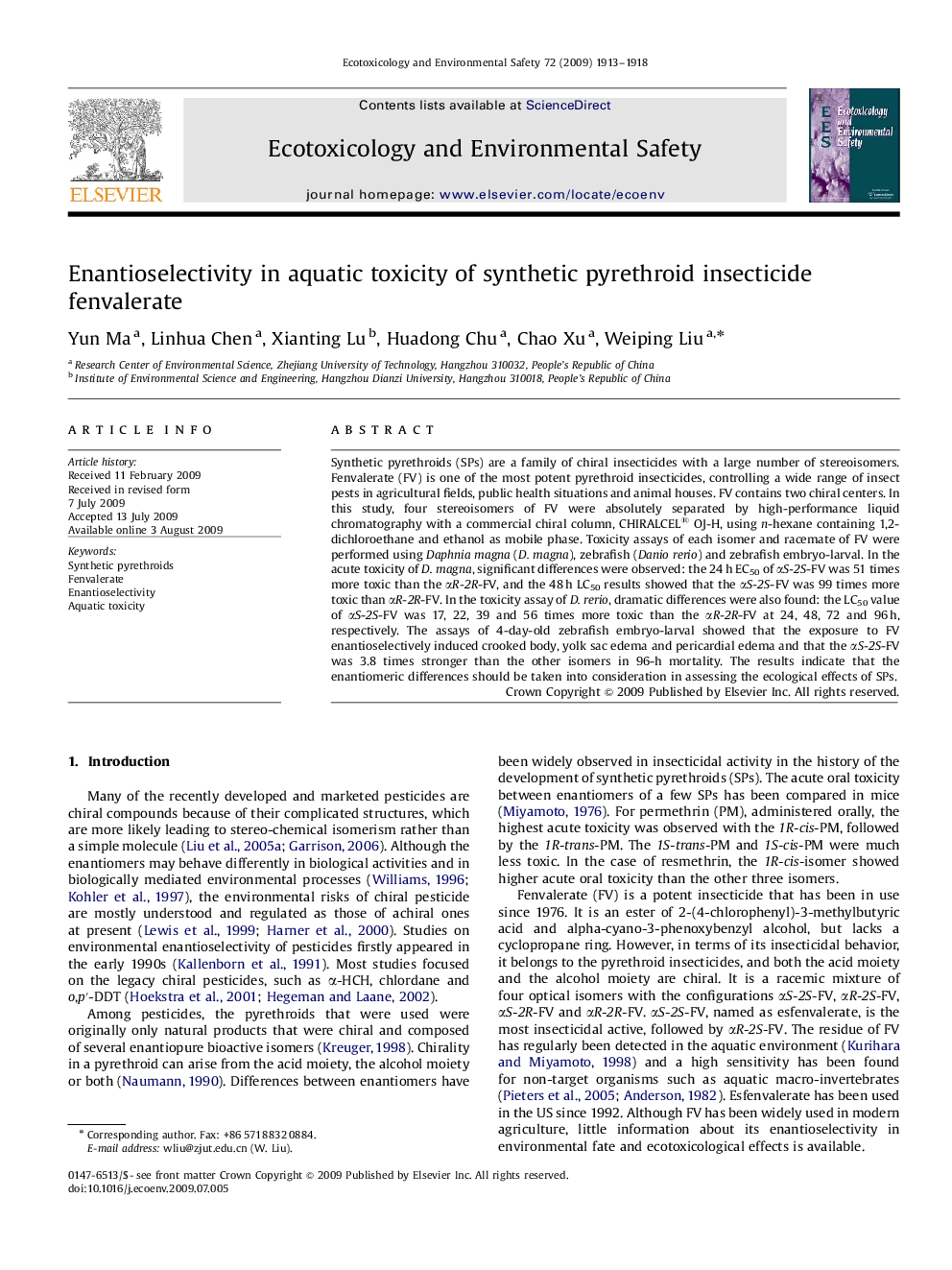| Article ID | Journal | Published Year | Pages | File Type |
|---|---|---|---|---|
| 4421538 | Ecotoxicology and Environmental Safety | 2009 | 6 Pages |
Synthetic pyrethroids (SPs) are a family of chiral insecticides with a large number of stereoisomers. Fenvalerate (FV) is one of the most potent pyrethroid insecticides, controlling a wide range of insect pests in agricultural fields, public health situations and animal houses. FV contains two chiral centers. In this study, four stereoisomers of FV were absolutely separated by high-performance liquid chromatography with a commercial chiral column, CHIRALCEL® OJ-H, using n-hexane containing 1,2-dichloroethane and ethanol as mobile phase. Toxicity assays of each isomer and racemate of FV were performed using Daphnia magna (D. magna), zebrafish (Danio rerio) and zebrafish embryo-larval. In the acute toxicity of D. magna, significant differences were observed: the 24 h EC50 of αS-2S-FV was 51 times more toxic than the αR-2R-FV, and the 48 h LC50 results showed that the αS-2S-FV was 99 times more toxic than αR-2R-FV. In the toxicity assay of D. rerio, dramatic differences were also found: the LC50 value of αS-2S-FV was 17, 22, 39 and 56 times more toxic than the αR-2R-FV at 24, 48, 72 and 96 h, respectively. The assays of 4-day-old zebrafish embryo-larval showed that the exposure to FV enantioselectively induced crooked body, yolk sac edema and pericardial edema and that the αS-2S-FV was 3.8 times stronger than the other isomers in 96-h mortality. The results indicate that the enantiomeric differences should be taken into consideration in assessing the ecological effects of SPs.
